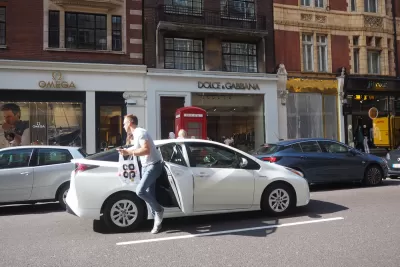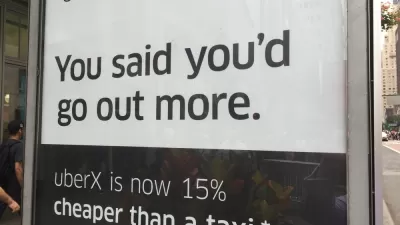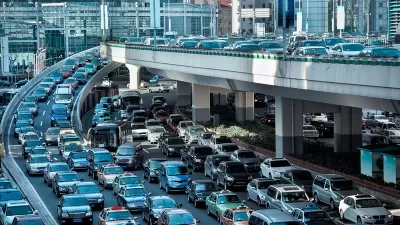After a court battle, the two big transportation network companies finally released trip data, revealing rapid growth and a concentration of rides in the city's most congested areas.

"The two ride-hailing giants [Uber and Lyft] provided more than 91,000 rides on an average day in the second quarter of this year, according to ridership reports the companies filed with the city, recently made publicly available for the first time," reports David Gutman. The state supreme court forced Uber and Lyft to release the data, and the companies finally did so in September
"While that’s just a fraction of daily travel in the Seattle region, Uber and Lyft trips are heavily concentrated in the city’s densest neighborhoods, where nearly 40,000 rides a day start in ZIP codes covering downtown, Belltown, South Lake Union and Capitol Hill," adds Gutman.
Gutman's conclusion based on this information: Uber and Lyft "are almost certainly contributing to worsening congestion."
Still, Seattle is one of the few cities in the country where transit ridership is increasing, so these findings do not show these transportation network companies (TNCs) poaching rides from public transit, as research has found in other cases. The findings do, however, echo recent analysis from San Francisco, which found TNCs adding 25 percent to the city's congestion. An earlier report by Schaller Consulting also estimated that TNCs had added 94 million additional vehicle moles to Seattle-area roads in 2017.
Gutman also details the history of Seattle's efforts to force Uber and Lyft to reveal their ridership data—a process that culminated in September of this year, shortly after Schaller Consulting revealed its analysis. Boston also requires publicly available trip data from TNCs. That city saw 96,000 TNC trips per day in 2017.
FULL STORY: How popular are Uber and Lyft in Seattle? Ridership numbers kept secret until recently give us a clue

Planetizen Federal Action Tracker
A weekly monitor of how Trump’s orders and actions are impacting planners and planning in America.

The Simple Legislative Tool Transforming Vacant Downtowns
In California, Michigan and Georgia, an easy win is bringing dollars — and delight — back to city centers.

San Francisco's School District Spent $105M To Build Affordable Housing for Teachers — And That's Just the Beginning
SFUSD joins a growing list of school districts using their land holdings to address housing affordability challenges faced by their own employees.

In More Metros Than You’d Think, Suburbs are Now More Expensive Than the City
If you're moving to the burbs to save on square footage, data shows you should think again.

The States Losing Rural Delivery Rooms at an Alarming Pace
In some states, as few as 9% of rural hospitals still deliver babies. As a result, rising pre-term births, no adequate pre-term care and "harrowing" close calls are a growing reality.

The Small South Asian Republic Going all in on EVs
Thanks to one simple policy change less than five years ago, 65% of new cars in this Himalayan country are now electric.
Urban Design for Planners 1: Software Tools
This six-course series explores essential urban design concepts using open source software and equips planners with the tools they need to participate fully in the urban design process.
Planning for Universal Design
Learn the tools for implementing Universal Design in planning regulations.
Smith Gee Studio
City of Charlotte
City of Camden Redevelopment Agency
City of Astoria
Transportation Research & Education Center (TREC) at Portland State University
US High Speed Rail Association
City of Camden Redevelopment Agency
Municipality of Princeton (NJ)





























